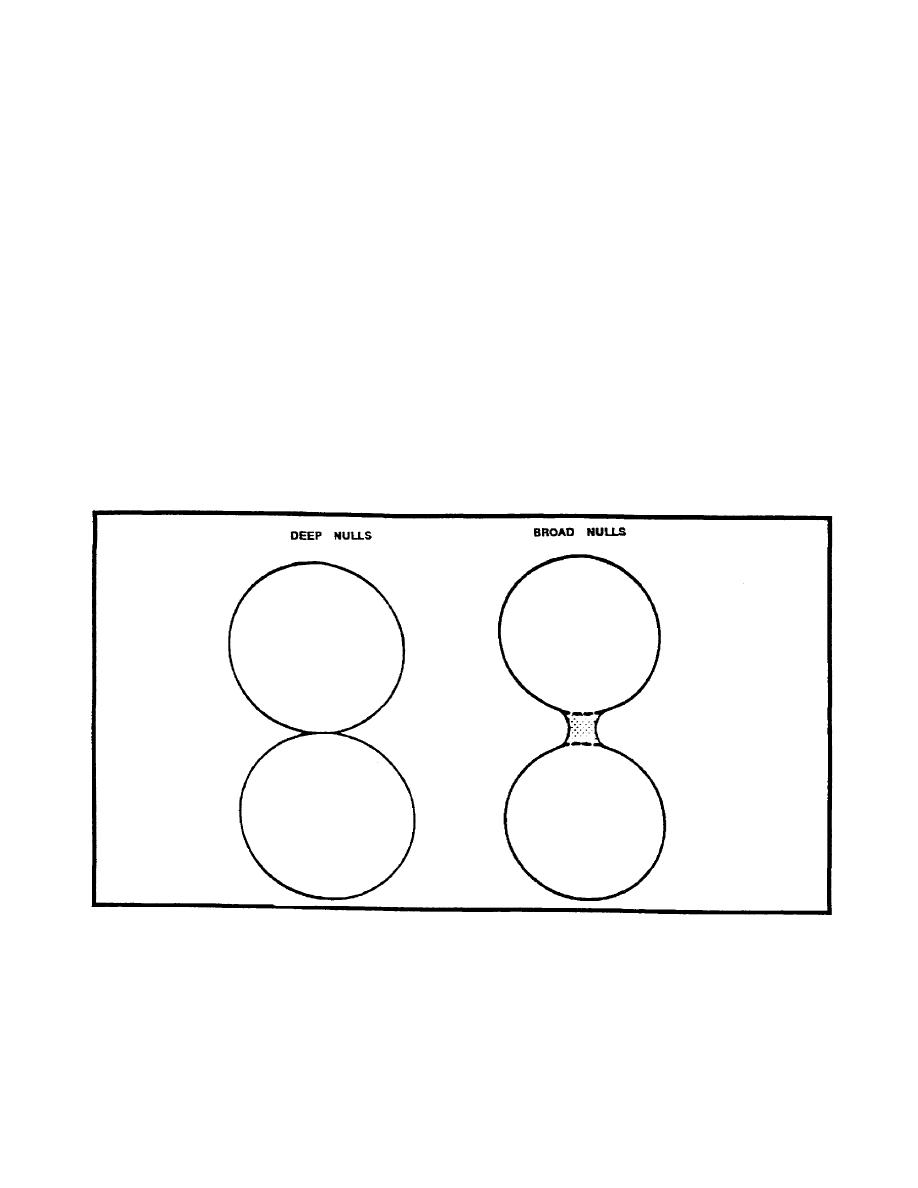
(h)
Sense. The addition of an equal voltage from another antenna to the response
of a directional antenna. If the voltage added is equal to the original voltage the response
pattern is changed to move the nulls to different places in the pattern. Because of this, it is
possible to determine from which direction the signal is arriving.
(i)
Response pattern. If a target transmitter were physically moved around an
antenna, putting out the same amount of signal all the way around a circle at a fixed distance
from the center of the antenna, the amount of signal received would vary according to the
type of antenna being measured. If this variation is recorded on circular graph paper as so
much volume equals so many lines on the graph, with a relationship between direction on the
paper and direction in the field, a pattern results which indicates the response of the
antennas at any direction. The whip antenna has a circular (omnidirectional) pattern.
(j)
Omnidirectional. The response pattern of (for example) the whip antenna. All
directions produce an equal response.
(k)
Null. The point of weakest response or ideally no response. If the equipment is
sensitive enough to allow critical measurement the system is said to have deep nulls. A
system with broad nulls does not meet the accuracy requirements of today's direction finding
systems (Figure 2-4).
Figure 2-4. Deep nulls and broad nulls.
IT0302
2-6



 Previous Page
Previous Page
